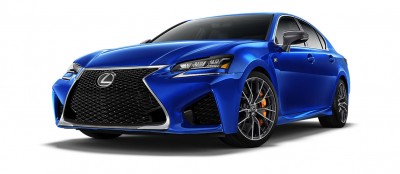Toyota Corp.’s Lexus is promoting its GS F in an unusually tactile manner.
The automaker, along with its advertising agency TeamOne, has partnered with marketing platform Opera Mediaworks and haptic technology licensor Immersion Corporation to design a mobile advertisement that causes the phone to vibrate to recreate the feeling of driving the vehicle. A novel advertisement that engages the consumer’s senses in a new way will make a stronger impression, likely leading to increased conversion rates.
“While haptic technology and adding touch to mobile video is still very new experience, in early user group studies, 85 percent of users felt more engaged and immersed in tactile-enhanced content,” said Paige Raynes, director, account management & content operations, content and media at Immersion Corporation. “Similar studies have shown that 5 percent to 15 percent of users were more likely to buy the product, share or view haptic-enhanced advertising again.
Immersive mobile
The Lexus GS F, which the ad promotes, is a 467 horsepower model sport sedan priced with an MSRP beginning at $84,440. The ad, which includes both a video and a series of informational pages, currently runs on Opera Mediaworks-enabled Android mobile apps in the United States.
The makers of the ad note that it was designed to capture how it feels to drive the GS F in real life. During the video, the phone will vibrate as the vehicle accelerates and during other appropriate moments.

Lexus GS F
The video shows the GS F as it is jolted to life and given color by machinery, at which point a voice, as if alerting the viewer to the TouchSense effects, warns, “Brace yourself: the first ever GS F is here.”
Lexus’ vehicle speeds down the road as the engine roars and the voiceover lists off a smattering of the vehicle’s features, all while the phone vibrates. The ad concludes at a swift 30 seconds, a length that will ensure the tactic’s novelty does not become tiresome or annoying.
At that point, the viewer is encouraged to “explore” or “learn more” by on-screen prompts, which show off the multimedia display, braking system, engine and interior and exterior design in pop-up windows. Rather than letting the ad settle, immediately providing the means for more information while the impression is still fresh and interest is high could quickly move consumers further down the purchase funnel.
Consumer behavior has shifted heavily in recent years, with the majority of online activity now taking place on mobile devices. Nevertheless, mobile advertising is still a fledgling field in some regards, with marketers grappling with the paradox of a screen that is smaller but also holds potential for more immersive viewing experiences taking up the whole screen.
The habits of consumers on mobile devices as compared to computers are also different, suggesting varying attention spans and interests. By turning a feature that phones have and computers do not – the ability to vibrate – into a part of its advertising strategy, Lexus is showing a willingness to innovate and an awareness of these differences. Being a leader on the front can help it garner market share before tactile ads become commonplace and lose their novelty.
Creative advertising
Lexus has recently unveiled a number of creative advertisements.
The brand is also granting fans of ABC’s “Quantico” the opportunity to experience the world of the television drama firsthand through a scripted virtual reality experience.
Tied to the midseason premiere of the show March 6, the short video lets the viewer tag along on a mission, assuming the point of view of a new FBI recruit through footage accessible for desktop, virtual reality headset, Apple TV or mobile device. In addition to the scene, the Quantico virtual reality experience includes two Easter eggs that give additional hints about the series’ plot, giving the loyal audience more incentive to explore the content (see story).
Additionally, Lexus also highlighted the carefully crafted nature of its 2016 RX with a “bespoke performance” in London.
One hundred guests were invited to the Mondrian hotel on Feb. 10, where they assumed the role of star in their own unique show, creating a live theatrical interpretation of the television spot “Live the RX Life” starring Jude Law. While the surprise performance may have only been witnessed by a select few, Lexus captured the event via 360-degree filming techniques including hidden cameras, and the footage was shared with viewers at home (see story).
“Adding vibration to crystal clear sight, sound and motion is a great way to tell an even more compelling story that captures the audience,” said Mike Own, executive vice president, North American sales at Opera Mediaworks. “It’s not right for every advertiser and we’re not interested in doing it just for the sake of doing it.
“It has to make sense with the video creative and truly enhance the experience for the end user,” he said. “So far, it’s been very well-received among both forward-thinking and more traditional advertisers.”
Source: https://www.luxurydaily.com/lexus-pushes-first-gs-f-with-tactile-mobile-ad/
